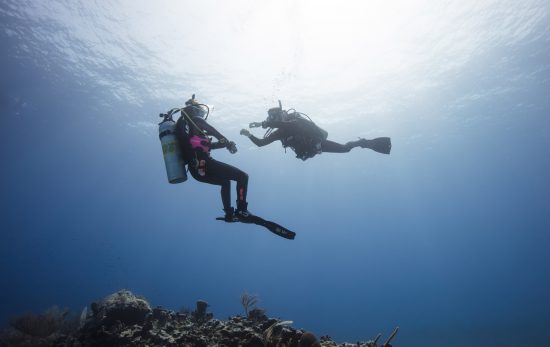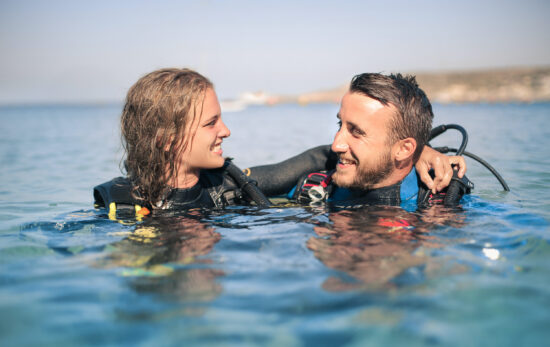2021 is a critical year for the ocean. Despite the environmental and climate crisis taking a backseat to the pandemic in 2020, the urgency to address key threats facing the ocean – and humanity – continues to rise.
There is undoubtedly a renewed sense of optimism and hope for the year ahead, but many people around the globe are still coping with the realities of a COVID 19 world. The pandemic is still restricting the ability to resume activities and recreational passions as many countries are facing national lockdowns that are keeping us inside and testing our creative spirits!
The good news is that there’s three unprecedented and powerful conservation campaigns going on that we can all engage with.
Become a Reef Scientist from Your Sofa
“One of the greatest challenges to the Great Barrier Reef is that much of the world believes it’s already gone. We’re out here today, and we can tell you it definitely is not.” – Andy Ridley, CEO, Citizens of the Great Barrier Reef
Citizens of the Great Barrier Reef is leading a world-first citizen science project to test the effectiveness of mass-scale human engagement in a significant underwater research project. In this case, anyone with internet access can play a role in determining the health of the largest reef system in the world. As PADI Divers, we already know the potential value of citizen science (Dive Against Debris), and we are excited to mobilize millions of PADI divers to help the team conduct The Great Reef Census. If successful, it could lead to more projects of its kind in which PADI Divers could participate in-with either fins on or fins off – all the more compelling to get involved!
The project is divided into two stages. Stage 1 (which we discussed in this Torchbearer Q&A) was about working with divers and marine tourism operators to capture images of the Great Barrier Reef. This stage surpassed expectations and the team now have thousands of quality images to assess. This is where you come in…
Stage 2 is about analyzing those images. Researchers from the University of Queensland have done a first pass at image analysis and now they need your help to ‘complete the picture’. If the analysis from both groups is complimentary, then the evidence will be considered accurate and the model can be rolled out across the world, providing real-time status-updates for our most treasured reefs. This would be a hugely influential tool in establishing greater legal protections for coral reefs.
Get Involved: Head to greatreefcensus.org and get analyzing! Join the PADI Torchbearer Community at padi.com/onebillion and stay tuned to the Torchbearer Facebook Hub for updates on actions and survey progress.
Join the World’s Largest Marine Protected Area Coalition
“For Every ten large fish that should be swimming in our oceans, there’s only one today.” –David Attenborough, How To Save Our Coastal Seas
The We Are One Ocean Coalition’s 30×30 Campaign is an unprecedented coalition to protect 30% of our one ocean by 2030. By coming together with surfers, sailors and over 50+ other water sports communities and ocean stakeholders, we are proud to speak as one voice to address habitat loss and the marine biodiversity crisis.
Never before have communities with a shared passion for the ocean come together on this scale to push for high quality marine protected areas. Every other breath we take comes from the ocean which means everyone has a stake in the health of the ocean, and a role to play in protecting it. You don’t need to be a diver, surfer or sailor to support this campaign!
We caught up with Reece Pacheco, SVP Ocean Responsibility at WSL to hear more about the campaign and the role that divers play as ocean ambassadors. Watch the Q&A here.
Get Involved: Go to weareoneocean.org and sign the petition, then write to your representative. All the info you’ll need is on that site, and you can download sharing images here.
Champion Seagrass and Mangrove Restoration
“For years these ecosystems were considered unhealthy breeding grounds for mosquitos, with no value for society. Today, we know this fragile tangle of life provides valuable ecosystem services.” – Exequiel Ezcurra, Natural Numbers
The ocean is reaching its carrying capacity, meaning we can no longer rely on its ability to endlessly absorb our carbon emissions in the way we’ve taken for granted since the dawn of the industrial era.
Seagrass and mangrove restoration is our secret weapon in prolonging the ocean’s capacity for further carbon uptake and storage. In turn, planting and conserving more of these habitats buys humanity more time to develop solutions that will allow us to reduce our carbon footprint at its source.
PADI has partnered with The Ocean Foundation to raise the profile of The SeaGrass Grow Program. While reforestation efforts have (rightly) received a strong amount of interest and support in the past years, blue carbon ecosystems are yet to garner the same level of attention… and that’s pretty crazy considering seagrass and mangrove habitats are up to 35x more effective at carbon uptake and storage than the same square footage of Amazon rainforest!
Why? Because they grow so fast! The speed of growth enables these habitats to absorb heaps of carbon that would otherwise linger in our atmosphere or contribute to ocean acidification.
Get Involved: Work out your carbon footprint with The SeaGrass Grow Carbon Calculator and consider offsetting it. If you aren’t in a position to donate, then use your voice to spread awareness of the power of seagrass and mangroves. Next time you book with PADI Travel, add a SeaGrass Grow donation to your booking. (If you’re lucky enough to be diving these habitats while the rest of us are in lockdown, please record footage of these magical ecosystems and send them to us at [email protected]!)





